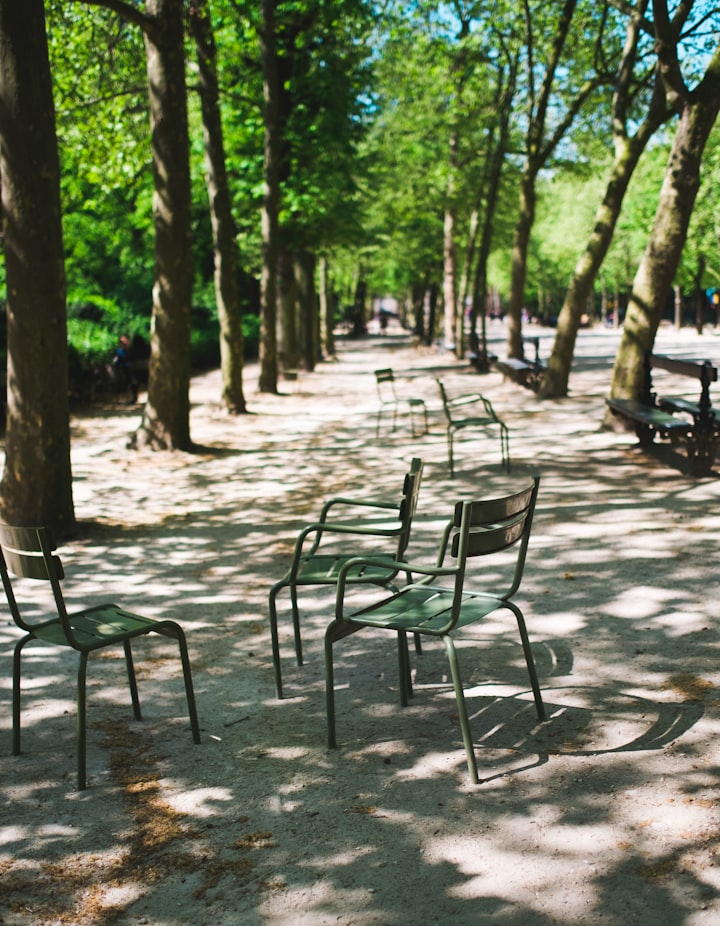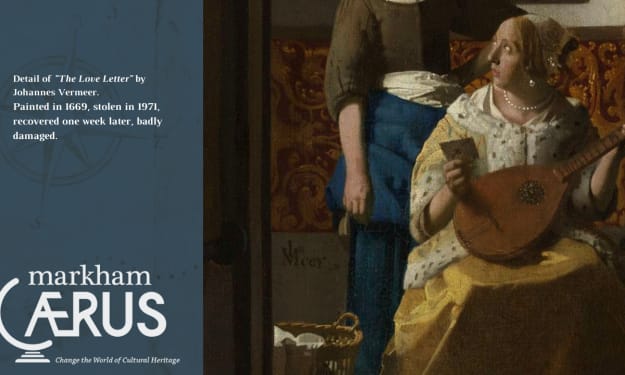The Book on the Bench
Things I never expected to see

It was just sitting there, alone on the bench's wooden slats, almost invisible in the grey November afternoon. I didn't even notice it until I sat down. I recognized it at once, of course; I have had so many of those little books tucked into pockets and bags over the years, with their smooth black covers and their snappy elastics, and the page-mark peeking out one end or another. I had come there to think, but suddenly all the greater issues were brushed away by the smaller. Who had left it? Did they know they had lost it? I jerked my head up and scanned the garden, looking for someone nearby, someone searching, anyone whom the notebook might belong to. But it was a cold day in the Tuileries when only a wandering and preoccupied soul would linger, and the few people there were only shapes in the distance.
There is something dubious about touching someone else's property, and opening a stranger's notebook is like stepping uninvited into their mind. But maybe there was a name and contact inside the cover; I know I always put them in mine. And I know the sinking feeling of losing something more irreplaceable than a wallet. Alright, it had to be done. But no luck - nothing inside the cover. What about the rest of the book?
And that is when the entire world fell away. I wasn't in Paris anymore, I wasn't on a hard, painted bench with the cold biting through my trousers, I wasn't anywhere but inside that little black book. For every page was covered with sketches, details, notes - of paintings, paintings with famous names, like Rembrandt and da Vinci, names that even I recognized. Pencil copies of paintings in their frames, ink sketches detailing hands, clothes, the corners of mouths, the shapes of ears. Rough forms blocking in squares, lines, triangles, showing the composition behind each picture, and everywhere, words. Descriptions of things that couldn't be captured in the black and white sketches, notes on the emotion, the stories of the paintings, imaginings of the lives of the people in the portraits, questions unanswered by the artworks themselves. From the outside, the notebook looked like new, but this must have taken weeks, months of love bordering on obsession. Who could have done this? Why?
And I realized that I wouldn't know, couldn't know. The author that had recorded every detail of half a dozen artworks had left not one clue or piece of themselves. I might have had a psychological portrait in my hands, but what I needed was a name and address. No, this notebook was well and truly lost. If I hadn't sat down that day, on that bench, the book would inevitably have been soaked by the perpetual Paris rain, and its drawings bled into nothingness. I took the orphan home.
But it didn't leave me alone. I kept looking at it, leafing through its pages like a riddle I was one step away from solving. Finally I thought if I don't know what to do with it, why don't I ask someone who does? I found the notebook steps away from the Louvre - what better place to start? And it worked. They helped me identify all six of the paintings, and somehow it didn't surprise me to find that they were all within their walls. It was as though the notebook was trying to come home.
Now I have never really been an art aficionado. I like going to museums when I am in a new city, and I like looking at beautiful things, of course, but I never understood why people rhapsodized over some muddy-brown masterpiece or a weird distorted daub that might have been a human. People seem to spend more time talking about art than the artist could possibly have taken to produce it, and how could they actually know what the artist was thinking?
But standing there that day, with the notebook in my hand, I got it. It was like I had been looking at things all my life and never really seen any of them. And the author of the notebook had. The notes and sketches were a map into each painting, showing me where to go first, where to go next, and naming everything I saw along the way. I leaned in and saw brushstrokes and colours, I stepped back and saw a hint of anxiety, or a touch of mischief on an unknown face, so many things I never saw in the paintings until I saw them in that book. And there was one I lost my heart to.
I don't know why; even the notebook couldn't explain that. It was a portrait of a woman and her daughter, dated 1786. I did a double-take when I noticed that the name of the mother and the name of the artist were the same: a self-portrait of Elisabeth Vigee le Brun. I hadn't even known that there were professional female artists that long ago. But I didn't think about the centuries, or the funny clothes. I saw their faces. They looked out of that picture with a feeling I had never felt, never found even in one of the most beautiful cities in the world. I didn't know if I was falling in love with her, or was looking at my future family, or if I wanted them to show me how to feel like that. I returned over and over, and always with the little book. I spent time with all the paintings, I even tested myself with other paintings, to see if I could create a notebook of my own, but I always came back to that woman and her daughter.
And it seemed the notebook had one more gift to give. I was at a flea market on the edge of the city, on a rare and sunny day, and I saw them again. It was a detail of their faces, just the two faces I knew by heart. It was a preparatory drawing, a sketch artists create before the final commitment of the painting, a place to work out ideas, and there were very slight differences between this drawing and the finished portrait. It was just slipped into plastic, with a bit of cardboard to support it, and a price tag of a few Euros. The vendor couldn't tell me anything about it except that it was probably a print, and cheerfully wrapped it up for me.
Yet when I got it home and looked closely, it didn't look like a print. I could see the pigment skimming over the texture of the paper, and wondered if it could actually be an antique copy. I took it to a specialist gallery - one of so many in the city - and asked if they could evaluate it for me. The owner was polite, though I couldn't understand the expression on his face. He took a long time - first, it had to be examined, then another expert had to be called in, then endless discussion, pointing, and looking up of things on the internet. Finally, the art dealer turned to me, and for a moment something in his eyes looked like the drawing he carried. It was not a copy, and not a print. Forgotten in an antique stall in a market, was an original drawing of a woman preparing to paint a self-portrait with her child, two and a half centuries ago. "It is a remarkable discovery. In US currency its value is likely $20,000. If you would care to sell?"
I looked at him. And I looked at the faces looking back at me...
About the Creator
Valerie Thibodaux
Unsolicited observations on everything...






Comments
There are no comments for this story
Be the first to respond and start the conversation.